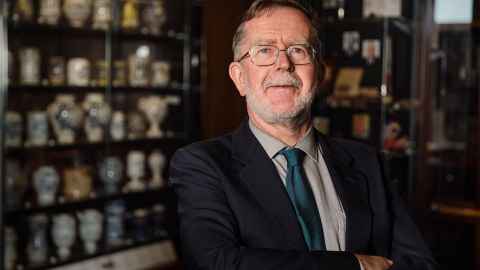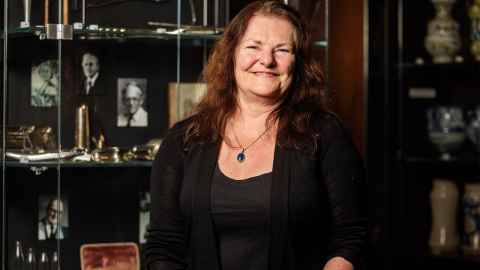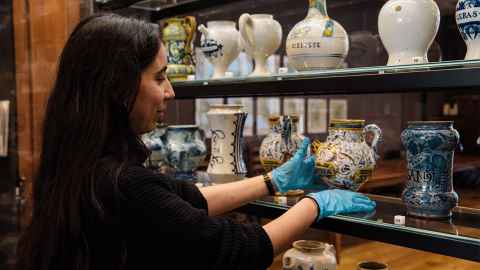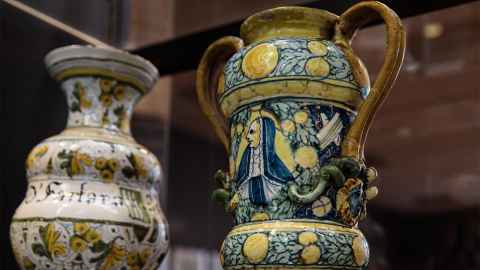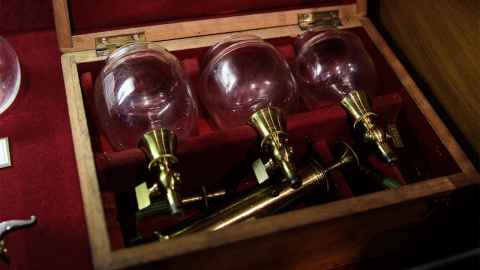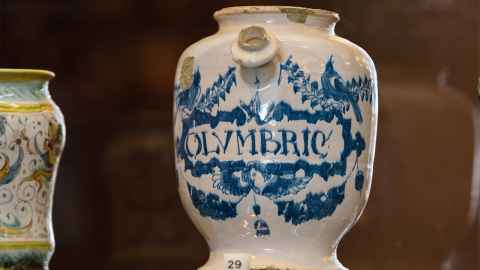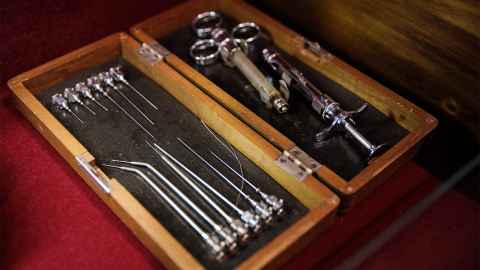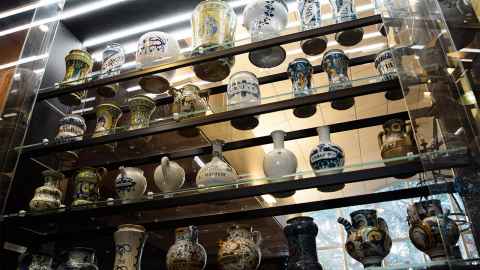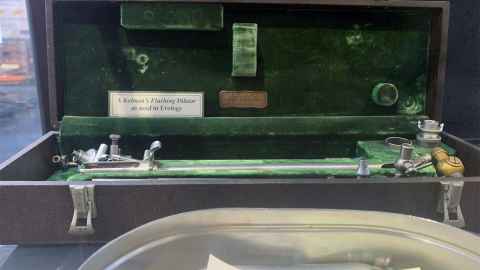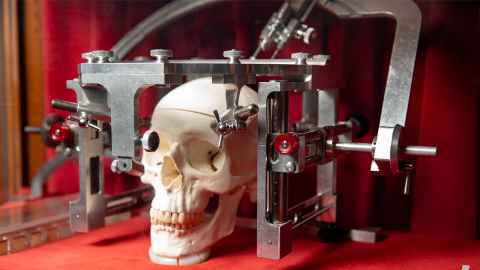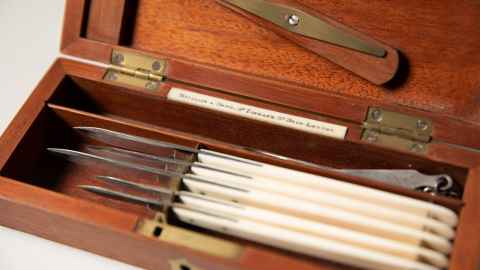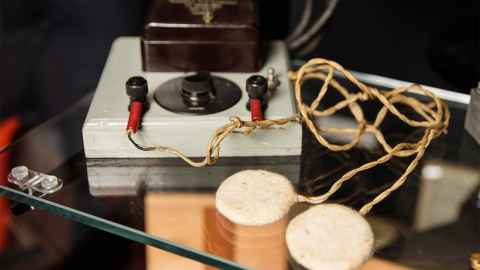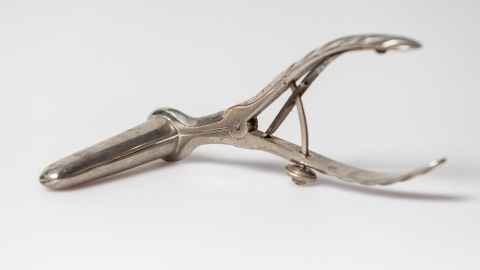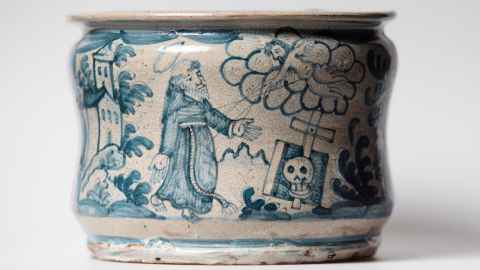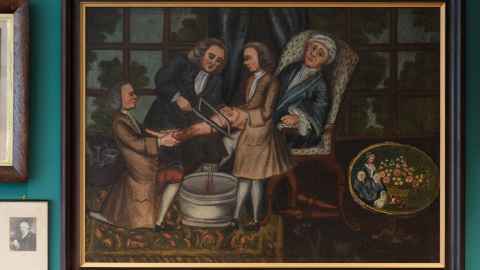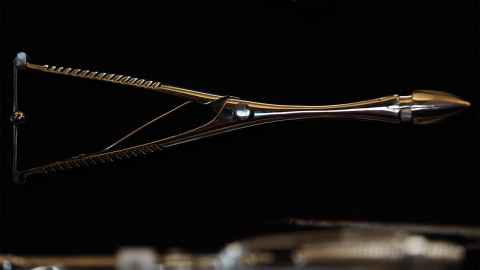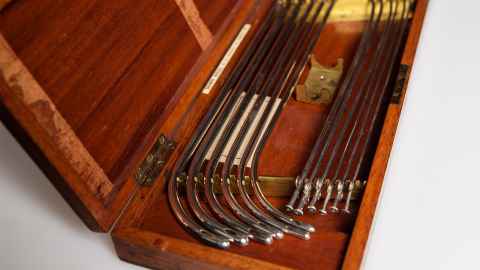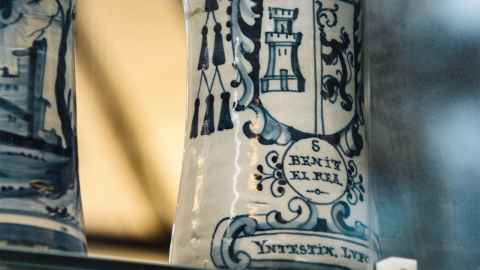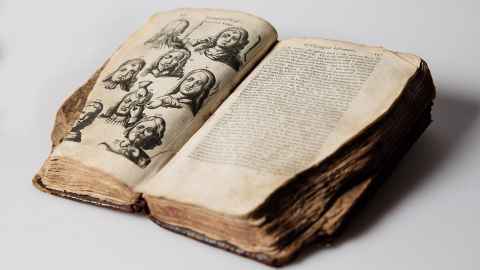Museum an insight into how far medicine has come
4 November 2021
An intriguing medical library and museum is tucked away in a corner of Auckland Hospital’s grounds.
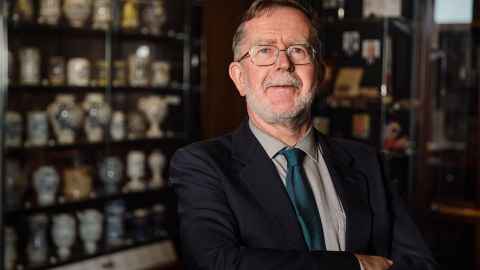
If you’re one of those people who dreads going to the doctor, thank your lucky stars you weren’t born 100 years ago.
In the Ernest & Marion Davis Memorial Library, a gem of a medical history collection in the grounds of Auckland Hospital, you can read the medicinal labels on apothecary jars to see how far we’ve come. Fancy being treated with wolves’ entrails washed in white wine, blown upon, dried and rolled in wormwood? How about oil of earthworms, earthworms cooked in rose-flavoured oil with a little wine? Feel better?
This year is the 60th anniversary of the library. It was established when Sir Ernest Davis donated a substantial sum of money for a medical library, medical museum and meeting place for the Auckland Hospital Board, in memory of his wife Marion.
When the Auckland Medical School opened, the Philson Library was created but the Ernest & Marion Davis Library continued as a medical history repository. It is the physical home of the Auckland Medical History Society (AMHS), founded in 1964 by Drs Edward Roche, James Newman and Laurie Gluckman, father of Sir Peter. James donated around 40 apothecary jars of English, Spanish, Dutch and Italian origin to the library, added to over the years.
The late Kaye Ibbertson, a long-time professor of endocrinology in the Auckland Medical School, was the driving force behind the AMHS for many years. Today, its president is alumnus Dr Neil Anderson. Judith Murphy, an honorary academic in the Faculty of Medical and Health Sciences, is on the AMHS committee.
“I’ve seen many medical museums around the world and this has one of the most interesting collections of apothecary jars, and other objects, many of which have been donated by Auckland alumni or their families,” says Judith.
Check out some of the objects in the gallery below. Story continues after.
Neil, a neurologist with the Auckland District Health Board, says anyone with an interest in medical history and heritage can attend the society’s meetings, including students, for whom membership is free.
“People tend to become interested in medical history as they get older, but we are trying to encourage younger people to become involved. There is a lot to be learned from medical history, it’s not just a curiosity.”
He says students, young doctors and nurses may be surprised by what can be gleaned from the collection through curator Juliet Hawkins, assistant Melanie Mirfin, an Arts alumna, and librarian Victoria Bell.
“What we see in the collection increases our understanding about why we do things the way we do today,” says Neil. “We can learn from how others approached medical conditions and also from mistakes made. You learn how a particular disease was discovered, what treatments were invented, what worked and what didn’t.”
As well as around 5,000 books, the collection houses masses of medical equipment, such as a 1900s vaginal specula, part of which consists of a porcupine-quill-handled probe; a worryingly large metal flushing dilator used in urology; and silver catheters to make your eyes water. To say nothing of the blood-letting cups.
There are also artworks. “The one I like best is the poster of the doctors advocating smoking,” says Neil.
Another painting shows a man having his leg amputated, blood dripping into a bucket and a dog sitting patiently at the side. The dog couldn’t be seen in the painting until the artwork was restored by alumna Sarah Hillary, Auckland Art Gallery’s principal conservator.
When Covid levels allow, AMHS also holds regular lectures by medical historians.
“Being a neurologist myself, I’m very interested in its history. I gave a talk this year on Marshall McDonald, a Dunedin physician who was probably the first person interested in neurology in New Zealand.”
Neil had planned to write a book on New Zealand’s neurology history, but kept getting diverted by the interesting personalities he discovered along the way, including McDonald.
People tend to become interested in medical history as they get older, but we are trying to encourage younger people to become involved. There is a lot to be learned from medical history, it’s not just a curiosity.
He has also written a biography of Wellington neurologist Dusty Allen and is writing one on Derek Denny-Brown, who became professor of neurology at Harvard.
“He was likely the world’s most influential neurologist from 1940 to 1970.”
The museum’s glass cabinets feature memorabilia of three Kiwi neurologists, Gavin Glasgow, Keith Eyre and Jock Caughey, the latter whose biography Neil is also compiling.
“Gavin’s homemade reflex hammer is there, and Keith Eyre’s examination bag. But pride of place goes to a stereotactic frame used by early neurosurgeon, Graeme Macdonald,” says Neil. “It’s a device that’s fixed around the head to keep it still so you can put a lesion in the brain.
“This was a very early frame and was really successful. Graeme trained and worked with a neurosurgeon in England who made these in his workshop. Graeme brought it back to New Zealand to use.”
Neil grew up in Auckland and trained at the University of Auckland Medical School, Auckland City Hospital and in New York. He has worked at Auckland Hospital since returning from the US around 1987. He is interested in stroke and autoimmune diseases in the brain, particularly those triggered by cancer, and evolving treatments for multiple sclerosis.
“We can’t yet cure MS, but we can slow the process.”
The Auckland Medical History Society also funds an annual medical humanities essay competition for students, instigated by Professor Linda Bryder, a medical historian at the University.
“The essay writer doesn’t have to be a medical student,” says Neil. “It could be an engineering student or a history student.”
With students living through a moment in medical history now, what could be more timely?
Story by Denise Montgomery
ingenio@auckland.ac.nz
Contact the Auckland Medical History Society through: amhs.co.nz
Read about the Ernest & Marion Davis Library (PDF)
This article first appeared in the Spring 2021 issue of Ingenio.
